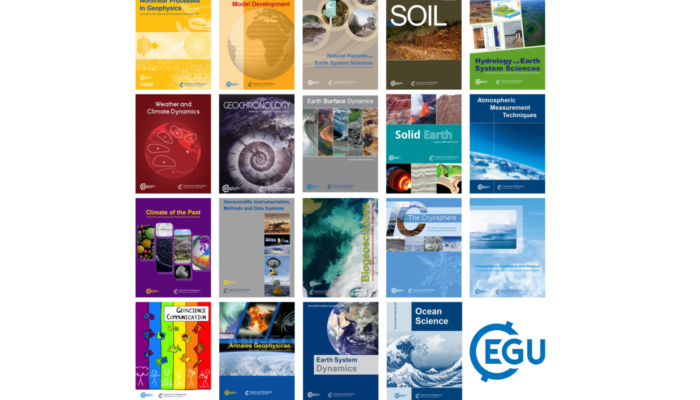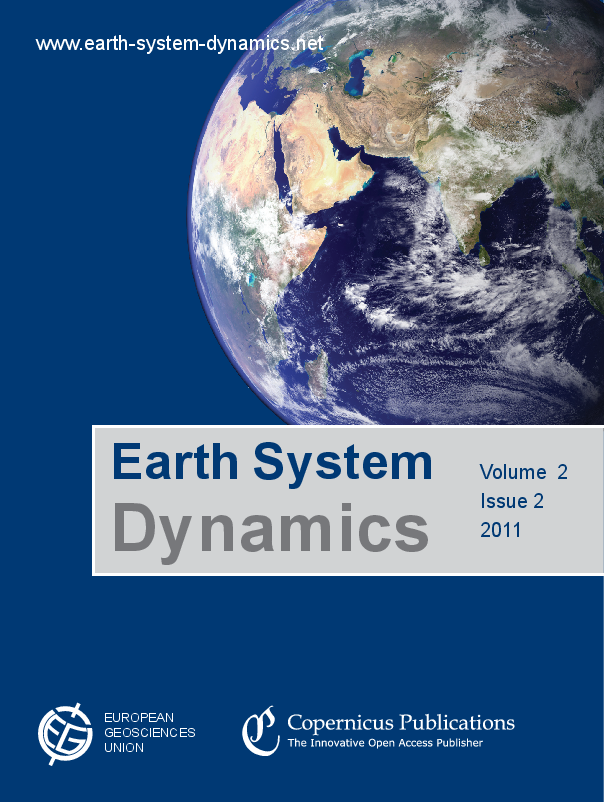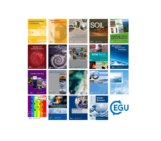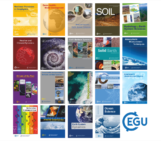
Each month we feature specific Divisions of EGU and during the monthly GeoRoundup we put the journals that publish science from those Divisions at the top of the Highlights section. For October, the divisions we are featuring are Division on Energy, Resources and the Environment (ERE) and Division on Stratigraphy, Sedimentology and Palaeontology (SSP). They are served by the journals: Earth System Dynamics (ESD) and Solid Earth (SE).
Featured highlights
Exploring climate stabilisation at different global warming levels in ACCESS-ESM-1.5 – 30 October 2024
Governments are targeting net-zero emissions later this century with the aim of limiting global warming in line with the Paris Agreement. However, few studies explore the long-term consequences of reaching net-zero emissions and the effects of a delay in reaching net-zero. We use the Australian Earth system model to examine climate evolution under net-zero emissions. We find substantial changes which differ regionally, including continued Southern Ocean warming and Antarctic sea ice reduction.
Bringing it all together: science priorities for improved understanding of Earth system change and to support international climate policy – 18 October 2024
We propose a number of priority areas for the international climate research community to address over the coming decade. Advances in these areas will both increase our understanding of past and future Earth system change, including the societal and environmental impacts of this change, and deliver significantly improved scientific support to international climate policy, such as future IPCC assessments and the UNFCCC Global Stocktake.
Uncertainty-informed selection of CMIP6 Earth system model subsets for use in multisectoral and impact models – 15 October 2024
From running climate models to using their outputs to identify impacts, modeling the integrated human–Earth system is expensive. This work presents a method to identify a smaller subset of models from the full set that preserves the uncertainty characteristics of the full set. This results in a smaller number of runs that an impact modeler can use to assess how uncertainty propagates from the Earth to the human system, while still capturing the range of outcomes provided by climate models.
Highlights
Natural Hazards and Earth System Sciences
The Earthquake Risk Model of Switzerland, ERM-CH23 – 17 October 2024
Geoscientific Model Development
A three-stage model pipeline predicting regional avalanche danger in Switzerland (RAvaFcast v1.0.0): a decision-support tool for operational avalanche forecasting – 30 October 2024
Air quality modeling intercomparison and multiscale ensemble chain for Latin America – 28 October 2024
Seafloor sediment characterization improves estimates of organic carbon standing stocks: an example from the Eastern Shore Islands, Nova Scotia, Canada – 23 October 2024
The effects of land use on soil carbon stocks in the UK – 02 October 2024
Barchan swarm dynamics from a Two-Flank Agent-Based Model – 22 October 2024
Nonlinear Processes in Geophysics
A global analysis of the fractal properties of clouds revealing anisotropy of turbulence across scales – 21 October 2024
Energy transfer from internal solitary waves to turbulence via high-frequency internal waves: seismic observations in the northern South China Sea – 21 October 2024
Earth science for all? The economic barrier to European geoscience conferences – 10 October 2024
The spatio-temporal evolution of the Chongzhen drought (1627–1644) in China and its impact on famine – 11 October 2024
Hydrology and Earth System Sciences
Characterizing nonlinear, nonstationary, and heterogeneous hydrologic behavior using ensemble rainfall–runoff analysis (ERRA): proof of concept – 08 October 2024
Atmospheric Chemistry and Physics
Opinion: How will advances in aerosol science inform our understanding of the health impacts of outdoor particulate pollution? – 28 October 2024
The 2023 global warming spike was driven by the El Niño–Southern Oscillation – 10 October 2024
Stable and unstable fall motions of plate-like ice crystal analogues – 10 October 2024
Global-scale gravity wave analysis methodology for the ESA Earth Explorer 11 candidate CAIRT – 02 October 2024
EGU in the news – October
Professor Louise Slater, Hydrology and Earth System Sciences (HESS) and Earth’s Future, serves as a Science Officer for the European Geosciences Union, appointed as Associate Head for Research and Impact at the University of Oxford
Study titled Global Warming Spikes Can Happen Without Any Human Influence based on a letter published on our Atmospheric Chemistry and Physics journal.
Spanish National Research Council writes an article on Record-breaking Saharan dust events hit Spain between 2020 and 2022, a study based on a paper published on our Atmospheric Chemistry and Physics journal.
The EGU awarded Dr. Carla Mateus a Public Engagement Grant for her Prison Talks project, bringing climate change discussions to Irish prisoners through interactive sessions.




